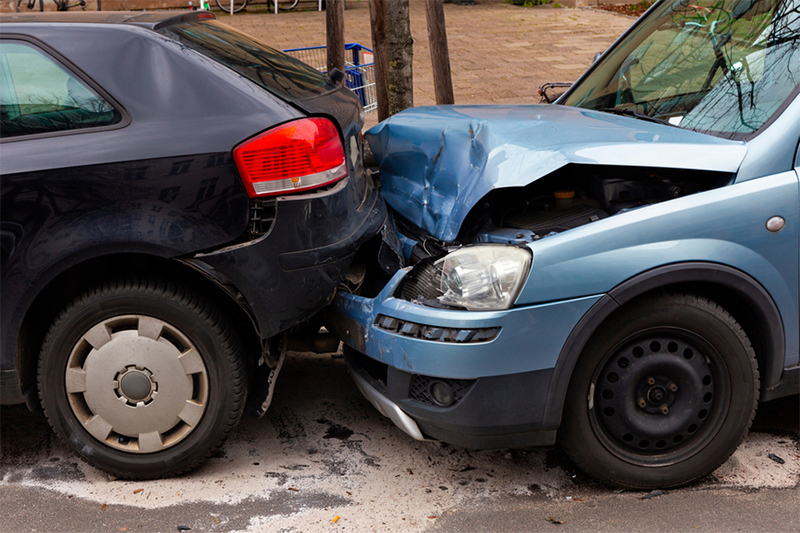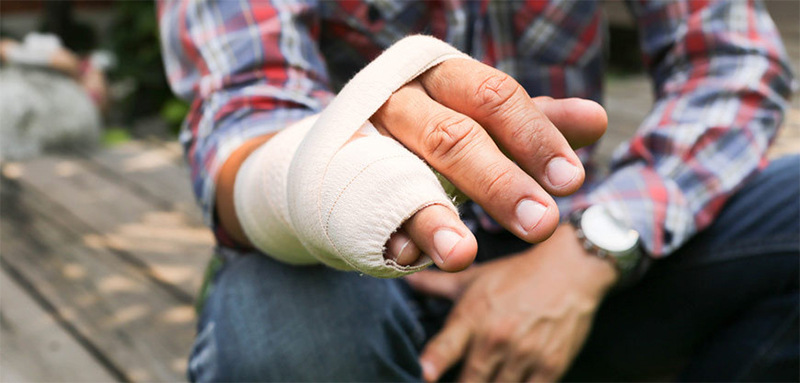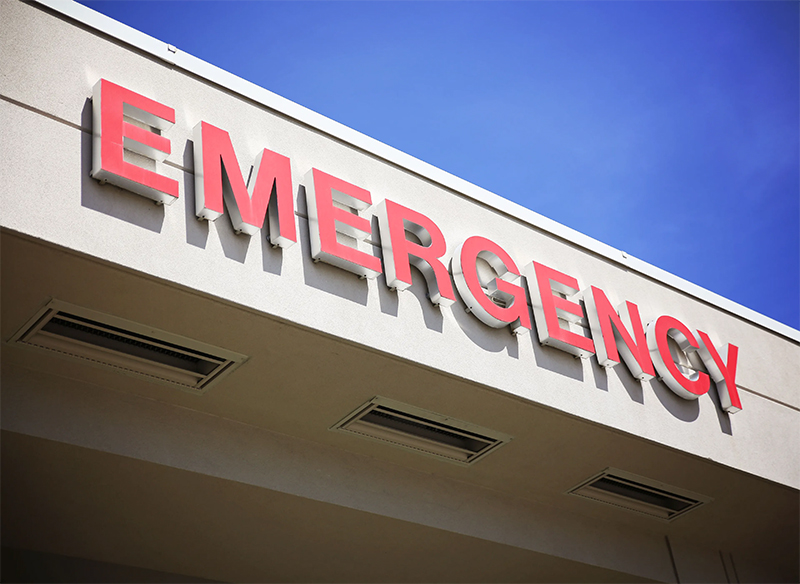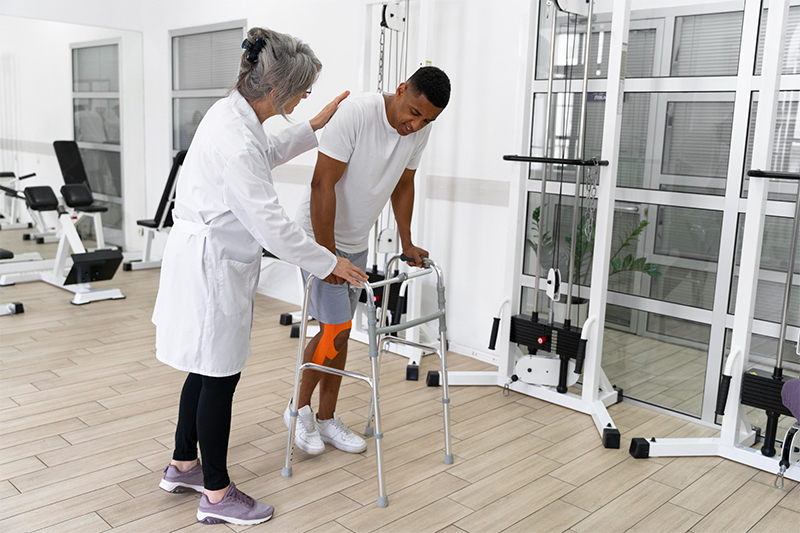What Is a Rear-End Accident?
A rear-end accident occurs when one vehicle collides with the vehicle in front of it, typically due to the rear driver’s inability to stop or slow down in time. This type of collision is one of the most common car accidents and can result in a range of injuries, from minor to severe.
Rear-ended collisions made up around seven percent of fatal crashes in 2019, based on data from the Insurance Information Institute. These types of collisions are generally regarded as highly dangerous. [1]
The force of impact from a rear-end crash can cause various injuries to the vehicle occupants of the cars involved.

Common Types of Rear-End Accidents
Rear-end accidents are one of the most common types of car accidents, and they occur when a vehicle collides with the vehicle in front of it. These accidents typically happen when the rear driver fails to maintain a normal range or safe distance or is distracted while driving.
During a rear-end collision, the impact from the rear vehicle can propel the front vehicle forward, causing a sudden acceleration and deceleration of both vehicles.
Both the vehicles and their occupants are affected during these accidents. The rear vehicle often sustains damage to its front end, while the front vehicle may have damage to its rear end.
The occupants of the rear vehicle can experience traumatic injuries due to the force of the impact, such as a broken nose, head injury, broken bones, internal injuries, or facial injuries from the deployment of airbags.
Those in the front vehicle are also at risk for injury. Whiplash injuries are common in rear-end accidents, causing neck pain, headaches, and muscle strains. In severe cases, spinal cord injuries, traumatic brain injuries, or spinal fractures can occur, leading to life-threatening injuries and a loss of range of motion.

Injuries Sustained in Rear-End Collisions
Rear-end collisions can lead to a range of injuries for both the occupants of the rear and front vehicles involved.
Traumatic Brain Injuries (TBIs)
Most traumatic brain injuries related to car accidents begin with a loss of consciousness.
When the brain experiences a sudden and forceful impact in a rear-end collision, it can disrupt its normal functioning, leading to a loss of consciousness. These injuries can happen when a person’s head strikes an object inside the vehicle, such as the steering wheel or dashboard, or when the person’s body is forcefully thrown about during the collision.
In rear-end accidents, traumatic brain injuries (TBIs) are a common type of injury that can occur with varying levels of severity.
Mild TBIs, also known as concussions, may cause symptoms like headache, blurred vision, dizziness, and memory loss.
Moderate to severe TBIs can result in a loss of consciousness, extended memory loss, and even changes in personality and behavior. Emotional challenges, including depression, anxiety, and irritability, may also arise. In some cases, these injuries can be life-threatening.

Spinal Cord Injuries
Spinal cord injuries can occur as a result of rear-end accidents and have significant consequences for the individuals involved.
The spinal cord is part of the central nervous system, responsible for transmitting signals between the brain and the rest of the body.
Rear-end car accidents can result in various spinal injuries, leading to significant impacts on an individual’s quality of life.
Spinal injuries experienced in such accidents may be partial or complete spinal injuries. These injuries can cause a range of physical effects, including paralysis (paraplegia or quadriplegia), decreased mobility, and loss of sensation in certain body parts.
Depending on the severity of the injury, individuals may require extensive rehabilitative care to regain function and adapt to their new circumstances. Even with rehabilitative care, the effects of a spinal injury from a rear-end accident can be long-lasting and may require ongoing medical treatment to manage pain and optimize overall well-being.
Broken Bones
Broken bones, also known as fractures, are a common type of injury resulting from rear-end accidents. The impact force of a collision can cause bones in various parts of the body to break, including the arms, legs, ribs, and pelvis.
During a rear-end accidents, individuals may experience fractures in their arms or legs if they collide with the steering wheel, dashboard, or other hard surfaces. The intensity of the impact can cause these bones to fracture. Debris from the accident can also strike the body with enough force to cause fractures in various areas.
The role of safety mechanisms such as airbags and seatbelts cannot be overlooked in terms of broken ribs. While seatbelts are essential for restraining occupants and preventing them from being ejected from the vehicle, the force exerted by the seatbelt during a collision can contribute to rib fractures.
Airbags, while designed to protect the head and torso, can also potentially cause fractures in the upper body upon deployment due to their forceful inflation.
Symptoms of broken bones may include intense pain, bruising, swelling, stiffness, and difficulty using the affected body part. In some cases, bones may be visibly deformed or protruding through the skin.

Soft Tissue Injuries
Soft tissue injuries and strains are common in rear-end accidents due to the sudden impact and force applied to the body. These catastrophic injuries affect muscles, tendons, and ligaments and can cause significant pain and discomfort.
One type of soft tissue injury that often occurs in rear-end accidents is strain. This happens when the muscles or tendons are stretched or torn. Symptoms of a strain may include pain, swelling, muscle weakness, and limited range of motion. Treatment typically involves rest, ice, compression, and elevation (RICE), along with physical therapy to help restore strength and flexibility.
Another common soft tissue injury is a sprain, which affects the ligaments that connect bones and joints. Ligaments can become stretched or torn, leading to pain, swelling, and instability. Treatment includes rest and immobilization of the affected area, along with physical therapy to regain strength and stability.
Tears in the soft tissues can also occur in rear-end accidents. These tears can involve muscles, tendons, or ligaments and can result in severe pain and functional limitations. Treatment options may include rest, physical therapy, medication for pain management, and in some cases, surgery may be necessary.
Treatment of Rear-End Accident Injuries
When it comes to rear-end accident injuries, prompt and proper treatment is needed for a successful recovery. Immediate medical care can help alleviate pain and prevent complications from arising.

Soft Tissue Injury Treatment and Chronic Pain Management
Rest is the first step in treating soft tissue injuries. This allows the body to heal naturally by reducing stress on the affected area. Ice packs can be applied to reduce swelling, and over-the-counter pain medications can help relieve pain and inflammation.
Physical therapy is often recommended to promote healing and restore normal function. A trained therapist can provide specific exercises to strengthen the injured area and improve flexibility.
They may also use techniques such as massage, heat therapy, or electrical stimulation to reduce pain and promote healing.
Seeking immediate medical care ensures a proper diagnosis and appropriate treatment plan, reducing the risk of long-term complications.
Spinal Surgery
Surgery is often necessary to treat spinal or neck injuries sustained in rear-end accidents. Depending on the severity and type of injury, there are different surgical options available to repair and stabilize the affected area.
One common surgical procedure is the repair and stabilization of vertebral discs. This involves removing the damaged disc and replacing it with an artificial disc or fusing neighboring vertebrae together. By restoring stability to the spine, this procedure can alleviate pain and improve overall function.
Another surgical approach is spinal cord decompression. In this procedure, the surgeon removes any structures, such as bone or tissue, that are compressing the spinal cord. It aims to relieve pressure on the nerves, allowing for improved mobility and reducing pain.
Fusion techniques are also used. This procedure involves joining two or more vertebrae together using bone grafts, metal rods, or screws. Fusion helps stabilize the spine and prevents further damage, but it may reduce flexibility.
While these surgical options can provide significant benefits in terms of pain relief and improved function, they do come with certain risks. These include infection, bleeding, nerve damage, and the possibility of the surgery not achieving the desired outcome.
Physical Therapy
Physical therapy plays a role in the treatment of rear-end accident injuries, helping accident victims regain mobility, strength and reduce pain in affected areas. Range of motion exercises are a key component of physical therapy, focusing on improving flexibility and restoring the normal movement of the body.
These exercises target specific areas of the body that have been injured in a rear-end collision, such as the neck, back, and shoulders. By gently and gradually stretching and moving these areas, range of motion exercises help to reduce stiffness, increase flexibility, and improve overall function.
Physical therapy also helps to strengthen the muscles surrounding the injured areas, which can further enhance stability and support. Strengthening exercises are designed to gradually build up muscle strength and endurance, helping accident victims regain their pre-injury strength and prevent future injuries.
In addition to improving flexibility and strength, physical therapy can also help to reduce pain. Through a combination of manual therapy techniques, therapeutic exercises, and modalities such as heat or ice, physical therapists are trained to effectively manage pain and provide relief.

The Role of Legal Representation for Rear-End Accident Victims
In the aftermath of a rear-end collision, seeking immediate medical attention is most important. The resulting injuries may require ongoing treatment and rehabilitation, inevitably leading to medical bills that can quickly accumulate.
This is where accident lawyers and personal injury attorneys can play a vital role. By working closely with these legal professionals, victims can pursue the compensation they deserve to cover their medical expenses and other damages resulting from their injuries.
Skilled attorneys will navigate the complexities of the legal system, advocating for their client’s rights and ensuring they receive the necessary financial support to aid in their recovery. With the assistance of accident lawyers and personal injury attorneys, victims can focus on their well-being and receive the necessary medical attention without the added burden of overwhelming medical bills.
Whether the accident was caused by distracted driving or excessive speed, a personal injury lawyer can gather evidence, consult with medical experts, and build a strong case to pursue the compensation the victim deserves.
Contact Goldberg & Loren’s car accident attorneys to schedule a free consultation today.
Source:
[1] Facts + Statistics: Highway safety | III. (n.d.). Facts + Statistics: Highway Safety | III. https://www.iii.org/fact-statistic/facts-statistics-highway-safety.

